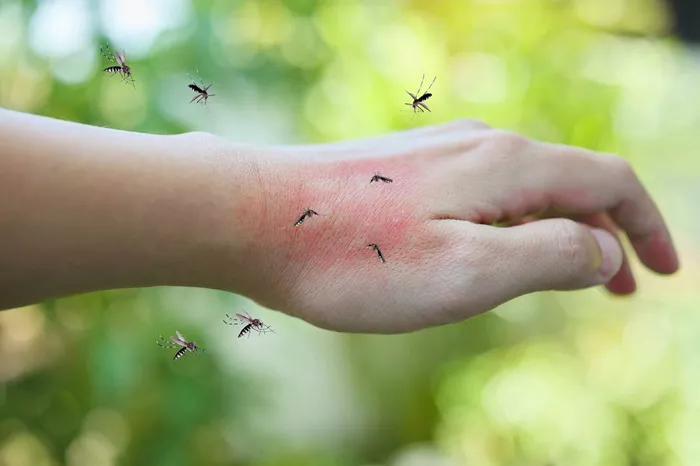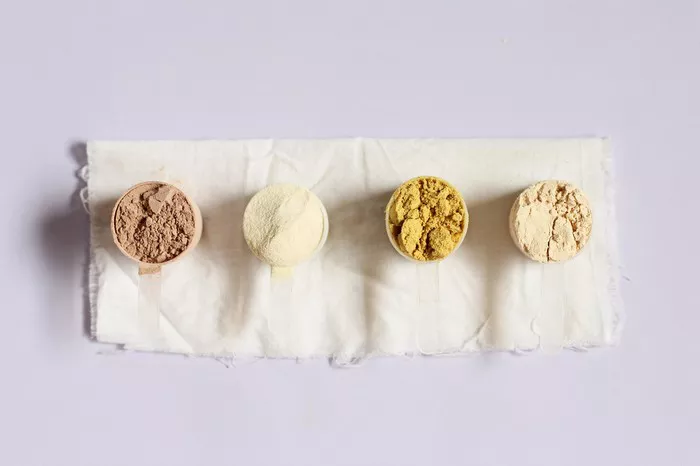Warts are common skin growths caused by the human papillomavirus (HPV). While they are usually harmless, they can be unsightly and sometimes painful. There are various methods for wart removal, such as cryotherapy (freezing), surgical excision, laser treatment, and topical medications. However, the post – removal care is equally important as it can significantly affect the healing process and reduce the risk of scarring and recurrence. This article will provide a comprehensive guide on how to take care of warts after removal from a professional skincare and beauty perspective.
Understanding the Healing Process
After wart removal, the skin goes through a series of natural healing stages. Initially, there is an inflammatory response. The body sends white blood cells to the area to clean up any damaged tissue and prevent infection. This may cause redness, swelling, and some discomfort.
Over the next few days to weeks, the body starts to form new tissue. Fibroblasts, a type of cell, produce collagen, which is the main protein in the skin that gives it strength and structure. A scab will usually form over the treated area. This scab acts as a protective layer, preventing bacteria and other harmful substances from entering the wound.
As the healing continues, the scab will gradually loosen and fall off, revealing new, pink skin. This new skin is more delicate and vulnerable compared to the surrounding normal skin, and it may take some time for it to fully mature and regain its normal color and texture.
General Post – Removal Care Tips
Keep the Area Clean
Gentle Cleansing: Use a mild, fragrance – free soap and lukewarm water to clean the area around the removed wart. Avoid using harsh scrubbers or abrasive materials as they can damage the newly forming skin. Gently pat the area dry with a clean, soft towel. Do this once or twice a day, or as directed by your doctor.
Avoiding Contamination: Make sure your hands are clean before touching the treated area. Wash your hands thoroughly with soap and water for at least 20 seconds. This helps prevent the introduction of bacteria or other pathogens that could lead to an infection.
Apply Antibiotic Ointment
Reducing Infection Risk: Applying an over – the – counter antibiotic ointment, such as Neosporin or Bacitracin, can help prevent infection. These ointments contain ingredients that kill or inhibit the growth of common bacteria. Apply a thin layer of the ointment to the treated area once or twice a day, as directed on the label.
Moisturizing Effect: In addition to preventing infection, the ointment also helps keep the skin moist. This is beneficial because a moist environment promotes faster healing and reduces the likelihood of the scab becoming too dry and cracking, which could lead to bleeding and a higher risk of infection.
Protect the Wound
Use a Bandage: Cover the removed wart area with a sterile bandage or dressing. This provides a physical barrier against dirt, bacteria, and friction. Choose a bandage that is appropriate for the size and location of the wound. For example, if the wart was removed from a finger, a small adhesive bandage may be sufficient. If the area is larger, a gauze pad held in place with medical tape may be a better option.
Change Bandages Regularly: Replace the bandage at least once a day or more frequently if it becomes dirty, wet, or loose. This helps maintain a clean and protected environment for the healing skin.
Avoid Picking or Scratching
Preventing Scarring: Picking at the scab or scratching the treated area can disrupt the normal healing process and increase the risk of scarring. The scab is an important part of the healing process as it protects the underlying new tissue. When you pick at it, you can tear the new skin that is forming, leading to more bleeding and a longer healing time.
Managing Itchiness: It is normal for the area to feel itchy as it heals. However, resist the urge to scratch. You can try gently patting the area or applying a cold compress to relieve the itch. If the itchiness is severe, consult your doctor, who may recommend an over – the – counter anti – itch cream.
Keep the Area Moisturized
Using a Moisturizer: Once the wound has started to heal and the scab has formed, you can start applying a gentle, fragrance – free moisturizer. This helps keep the skin hydrated and can improve the appearance of the new skin as it matures. Look for moisturizers that contain ingredients like aloe vera, shea butter, or hyaluronic acid, which are known for their soothing and hydrating properties.
Applying Moisturizer Correctly: Apply a small amount of moisturizer to the area and gently massage it in until it is fully absorbed. Do this once or twice a day, or as needed to keep the skin feeling soft and supple.
Specific Care for Different Removal Methods
Cryotherapy
Initial Aftercare: After cryotherapy (freezing), the treated area will likely blister. This is a normal part of the process. Do not pop the blister as it provides a natural barrier against infection. Keep the area clean and dry. If the blister is large and causing discomfort, your doctor may drain it.
Blister Management: As the blister starts to heal, it will gradually deflate and a scab will form. Follow the general post – removal care tips, such as keeping the area clean, applying antibiotic ointment, and protecting it with a bandage. The scab may take 1 – 3 weeks to fall off, depending on the size of the wart and the depth of the freezing.
Surgical Excision
Wound Closure: If the wart was removed surgically, the doctor may have closed the wound with stitches. Keep the stitches clean and dry. Avoid getting them wet for the first few days, as directed by your doctor. Your doctor will also provide instructions on when the stitches need to be removed, which is usually 5 – 14 days after the surgery.
Scar Prevention: After the stitches are removed, you can start using scar – reducing products. There are many over – the – counter scar gels and creams available that contain ingredients like silicone. Silicone has been shown to improve the appearance of scars by reducing redness, flattening the scar tissue, and making it less noticeable. Apply the scar – reducing product as directed on the label.
Laser Treatment
Immediate Post – Treatment: After laser treatment, the skin may be red, swollen, and slightly painful. Apply a cold compress wrapped in a clean cloth to the area to reduce the swelling and discomfort. Do this for 10 – 15 minutes at a time, several times a day.
Long – Term Care: The treated area will form a scab. Follow the general post – removal care guidelines. In some cases, your doctor may prescribe a topical cream or ointment to help with the healing process. Avoid sun exposure to the treated area as much as possible, as the new skin is more sensitive to UV rays and can develop hyperpigmentation (darkening of the skin).
Topical Medication
Ongoing Monitoring: If the wart was removed using topical medications, continue to monitor the area for any signs of infection or incomplete removal. Some topical medications may cause mild skin irritation, such as redness, peeling, or itching. If these symptoms are severe or do not improve, contact your doctor.
Skin Restoration: Once the wart has disappeared and the skin has healed, you can focus on restoring the skin’s normal texture and appearance. This may involve using gentle exfoliants to remove any dead skin cells and promote cell turnover. However, start with a very mild exfoliant and gradually increase the frequency and intensity as the skin becomes more tolerant.
Diet and Lifestyle Considerations
Diet
Nutrient – Rich Foods: Eating a balanced diet rich in nutrients can support the healing process. Foods high in vitamin C, such as oranges, strawberries, and bell peppers, are important for collagen synthesis. Collagen is essential for the formation of new skin tissue. Vitamin E, found in nuts, seeds, and spinach, has antioxidant properties that can help protect the skin from damage and promote healing.
Protein Intake: Protein is necessary for cell repair and growth. Good sources of protein include lean meats, fish, eggs, dairy products, and legumes. Make sure to include an adequate amount of protein in your diet to support the body’s natural healing mechanisms.
Lifestyle
Rest and Sleep: Getting enough rest and sleep is crucial for the body’s overall healing process. During sleep, the body releases hormones that help repair and regenerate tissues. Aim for 7 – 9 hours of quality sleep per night.
Stress Management: High levels of stress can affect the immune system and the body’s ability to heal. Practice stress – management techniques such as meditation, yoga, or deep – breathing exercises. These can help reduce stress and promote a more favorable environment for the skin to heal.
Signs of Complications and When to Seek Medical Help
Infection: Signs of an infection include increased redness, swelling, warmth, pain, and the presence of pus or a foul odor. If you notice any of these symptoms, contact your doctor immediately. Infections can delay the healing process and may require antibiotic treatment.
Excessive Bleeding: While some bleeding is normal immediately after wart removal, if the bleeding does not stop within a reasonable amount of time or if it starts again after the initial bleeding has stopped, seek medical attention.
Allergic Reaction: If you experience itching, hives, swelling, or difficulty breathing after using an antibiotic ointment or other post – removal products, it could be an allergic reaction. Stop using the product and contact your doctor right away.
Slow Healing or Recurrence: If the treated area does not seem to be healing after several weeks or if a new wart appears in the same area, it is important to consult your doctor. This may indicate an underlying issue or an ineffective removal method.
Conclusion
Taking proper care of the skin after wart removal is essential for a successful recovery. By following the general and specific care tips outlined in this article, you can promote faster healing, reduce the risk of scarring, and minimize the chances of recurrence. Remember to always follow your doctor’s instructions and seek medical help if you have any concerns about the healing process or if you notice any signs of complications. With the right care and attention, your skin will be able to return to its normal, healthy state.
Related topics:
How To Care For Skin After Liquid Nitrogen Treatment?
































